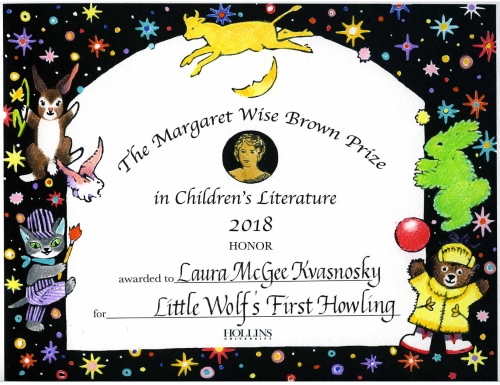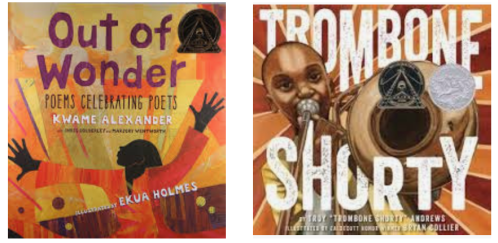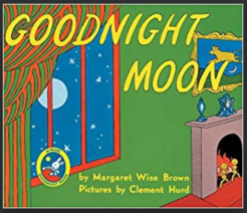
My Current Favorite: LOCOMOTIVE by Brian Floca. This is a book to spend hours pouring over….
As the year draws to a close, Mock Caldecott groups start compiling lists of the books they’ll discuss through early January. It takes time to get copies of the books, read through them, read through them again, compare them to other books being mentioned for the prestigious medal, deliberate, consider. So November – right now – is when the real conversations start and the winnowing down to a manageable list begins.
Some of these Mock Caldecott groups involve librarians in districts around the country. Some are formed by groups on websites such as GoodReads. Many teachers discuss and vote for favorites with their students. Anyone can have a Mock Caldecott discussion – gathering together as part of virtual or real communities with a shared interest in picture books. Author Leda Schubert tells you how, step-by-step, over at Write at Your Own Risk this week.
The goal of the discussion is usually 1) to guess which book might win or 2) to toot the horn for a chosen – possibly overlooked – favorite. I sat in on a 2013 Mock Caldecott discussion at Vermont College of Fine Arts, and it was definitely an eye-opener. Some books that I thought were not really “distinguished” enough had great champions in the group; some books I loved left other people cold. A few – just a few – were loved by almost everyone. For example, we were thrilled by Unspoken by Henry Cole, and voted it our favorite.

Unspoken by Henry Cole, a favorite which went unmentioned by the committee in 2013.
But Unspoken did not even get an Honor Medal; Creepy Carrots did, which didn’t even make our list. Mock Caldecott winners are often off the mark, because the dynamic of every group of readers can be so different. The eventual winner of the medal that year, This Is Not My Hat by Jon Klassen, was considered “cute” by our group, but not really “distinguished,” which is the criteria the American Library Association says should be used to choose the winner. The real Caldecott committee sometimes tries extra hard to find something both kid-friendly and distinguished – not an easy task. Sometimes they do an excellent job of honoring brilliant illustrations (for which the medal is awarded) without ignoring the need for a story well-told, and the Mock Caldecott groups try to do the same.
I can’t imagine what the pressure must be like if, when the final decision about the medal nears, opinion is divided (though the person who led our discussion at VCFA – Leda Schubert again – had been on the Caldecott committee before and told us it was all quite civilized – no one came to blows.) The book that wins the medal will be elevated to Oprah-level attention immediately, will be sought out by every K-3 teacher in America, not to mention parents and grandparents (and even, sometimes, kids!) and will most likely never go out of print. The committee members will be hailed as geniuses by some and dismissed as nincompoops by others, all within 24-hours of the announcements.
I thought those of you reading BOOKS AROUND THE TABLE might like some quick links to websites/blogs that report their lists and the results of their discussions (usually just before the January ALA conference when actual winners are announced.) You’ll find links if you scroll down past this collection of cover images for books mentioned again and again in the Mock Caldecott lists. If you have favorites that are getting overlooked, use the Comments field to share the titles with us so we can all check them out!
CALDECOTT FRONTRUNNERS:

Building Our House (written and illustrated by Jonathan Bean)

The Mighty Lalouche (written by Michael Olshan, illustrations by Sophie Blackall)

Journey (wordless, illustrated by Aaron Becker)

Matchbox Diary (written by Paul Fleischman, illustrated by Bagram Ibatoulline)

Mr. Tiger Goes Wild (written and illustrated by Peter Brown)

Inside Outside (wordless, illustrated by Lizi Boyd)

The Dark (written by Lemony Snicket, illustrated by Jon Klassen)

Bluebird (written and illustrated by Bob Staake)

Tortoise and Hare (written and illustrated by Jerry Pinkney)
(And don’t forget the book which opens this post – Locomotive by Brian Floca. It’s big and beautiful and non-fiction, which I couldn’t get enough of as a kid.)
There are many other books that make multiple lists – I’ve singled out just ten of those mentioned consistently. Here are links to several Mock Caldecott lists (not all lists have been finalized…some are just being compiled, some come in seasonal sections – Spring, Summer, Fall….)
1. Fuse #8 Production list (Scroll past the Mock Newbery to reach the Mock Caldecott list. This is compiled by the savvy and influential librarian, Betsy Bird, of the New York City Library.)
2. Watch. Connect. Read. (The author of this blog is a K-5 librarian – I wish we could put someone like him into every elementary school in America.)
3. Read, Write, Reflect. (A fine bunch of books under discussion, and ditto the comment I made above. The leader of this discussion with students is a 5th grade teacher named Katherine Sokolowski.)
4. Allen County Library System list (Indiana librarians – they have a particularly lively discussion and add many books throughout the year.) Click here for their blog site (One Book, Two Books, Old Books, New Books) and then enter “Mock Caldecott 2014” in the search box.
5. Calling Caldecott (compiled by The Horn Book)
6. Ashland University (Ohio) list, through August.
7. GoodReads.com group (they list “Currently Reading” – about four books discussed at any given time) as well as several past months’ reading suggestions – scroll down at the site to see those.
You’ll find plenty of other interesting discussions going on – just enter “Mock Caldecott 2014” as your search terms.
You can keep an eye on these through December and early January to see what books get added. And you can collect a stack of your favorites (or even some non-favorites – to keep the discussion lively!) from the library, invite friends over, and talk about which ones you would give the award to. Here is the ALA description of what the winner should be: “The Medal shall be awarded annually to the artist of the most distinguished American picture book for children published by an American publisher in the United States in English during the preceding year. There are no limitations as to the character of the picture book except that the illustrations be original work. Honor books may be named. These shall be books that are also truly distinguished.”
Use that as the guideline for your discussion.

I’d like to thank the committee that agreed to give this book the Caldecott medal in 1942. Nicely done.














































